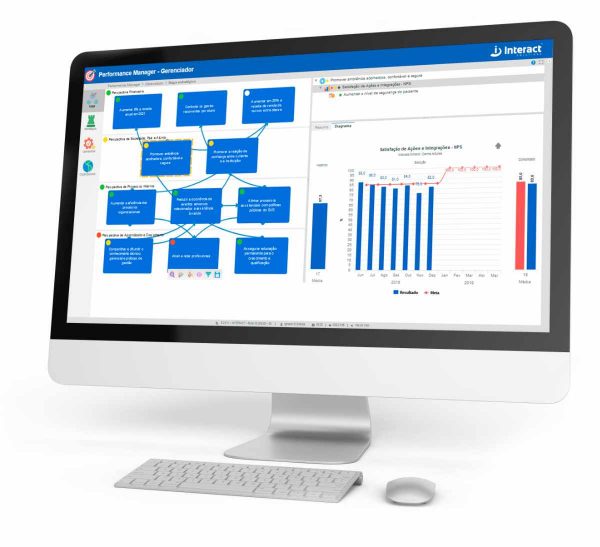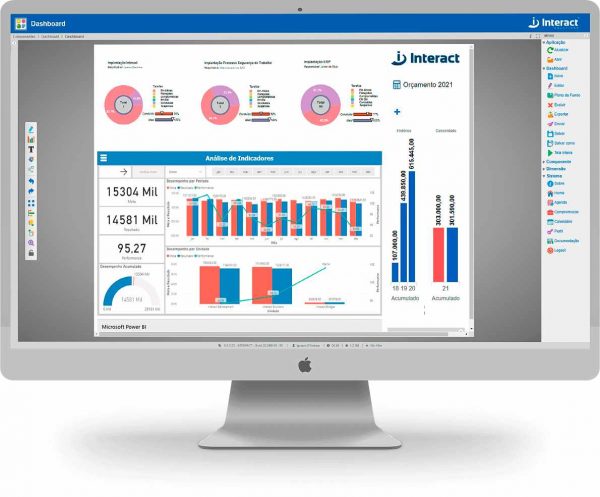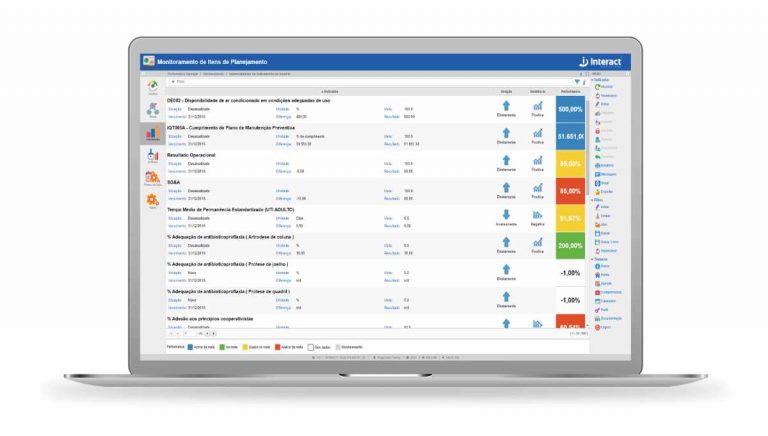
Quantitative guides to measure your company’s main processes. These are the Key Performance Indicators, a fundamental part of any company’s strategy.
Each reality, strategy and size must determine the key performance indicators. In other words, KPIs can vary by sectors (agribusiness, finance, health, education, public, mining, construction, etc), by macroprocesses (service, finance, human development, compliance, IT, etc) and even by frameworks (Cobit, PMBOK, PRINCE2, SCOR, Risk IT, etc).
Main types of KPIs:
– Capacity indicator
As its name suggests, this KPI demonstrates the production capacity of a company. For example, the number of visits to a hospital, the quantity of products packaged in an industry or the intensity of work in civil construction in hours/m².
– Productivity indicator
 Focused on business management, this KPI seeks to measure the efficiency of processes in terms of income. Examples include Acquisition Cost Per Customer (CAC), Cost Per Lead (CPL), and Profitability Index.
Focused on business management, this KPI seeks to measure the efficiency of processes in terms of income. Examples include Acquisition Cost Per Customer (CAC), Cost Per Lead (CPL), and Profitability Index.
– Quality indicator
Continuous improvement is the focus of this KPI. It measures the end result, based on predictive and preventive analytics, to ensure greater efficiency and effectiveness of business processes. To learn more about this topic, download this ebook.
– Strategic indicator
Strategic KPIs indicate the status of your business in relation to established goals and objectives. The percentage of profitability, the growth rate and the average ticket are some examples of this type of indicator.
See 4 reasons to use KPIs:
1) Accuracy of information at each step
KPIs provide correct information at every step of the process. As a rule, key indicators work like thermometers, which periodically monitor the health of your business
2) Greater business efficiency
 Due to their accuracy, they make the work more efficient. Knowing where we’re going and how we’re performing is crucial to keeping up with what’s going right and correcting out-of-the-curve results.
Due to their accuracy, they make the work more efficient. Knowing where we’re going and how we’re performing is crucial to keeping up with what’s going right and correcting out-of-the-curve results.
3) Agility and transparency
They generate agility and transparency in results. On the one hand, well-monitored KPIs ensure quick responses – predictive or predictive. On the other hand, they offer those involved the transparency of the entire business process.
4) Real-time overview
Finally, KPIs allow real-time panoramic view of the company’s performance. One thing is for sure: it is humanly impossible to keep an eye on everything that involves your company. In this sense, KPIs offer precisely this panorama of the organization’s performance. True allies of good management.
Did you like these tips? For you who want to go further in your management, Interact offers a complete solution for strategic management – from the strategic map, inspired by the Balanced Scorecard methodology, to KPIS, action plans and performance analysis.




